What They Saw Even for photojournalists who’ve spent years covering protests, tragedy and breaking news, the U.S. Capitol insurrection was shocking and unforgettable.
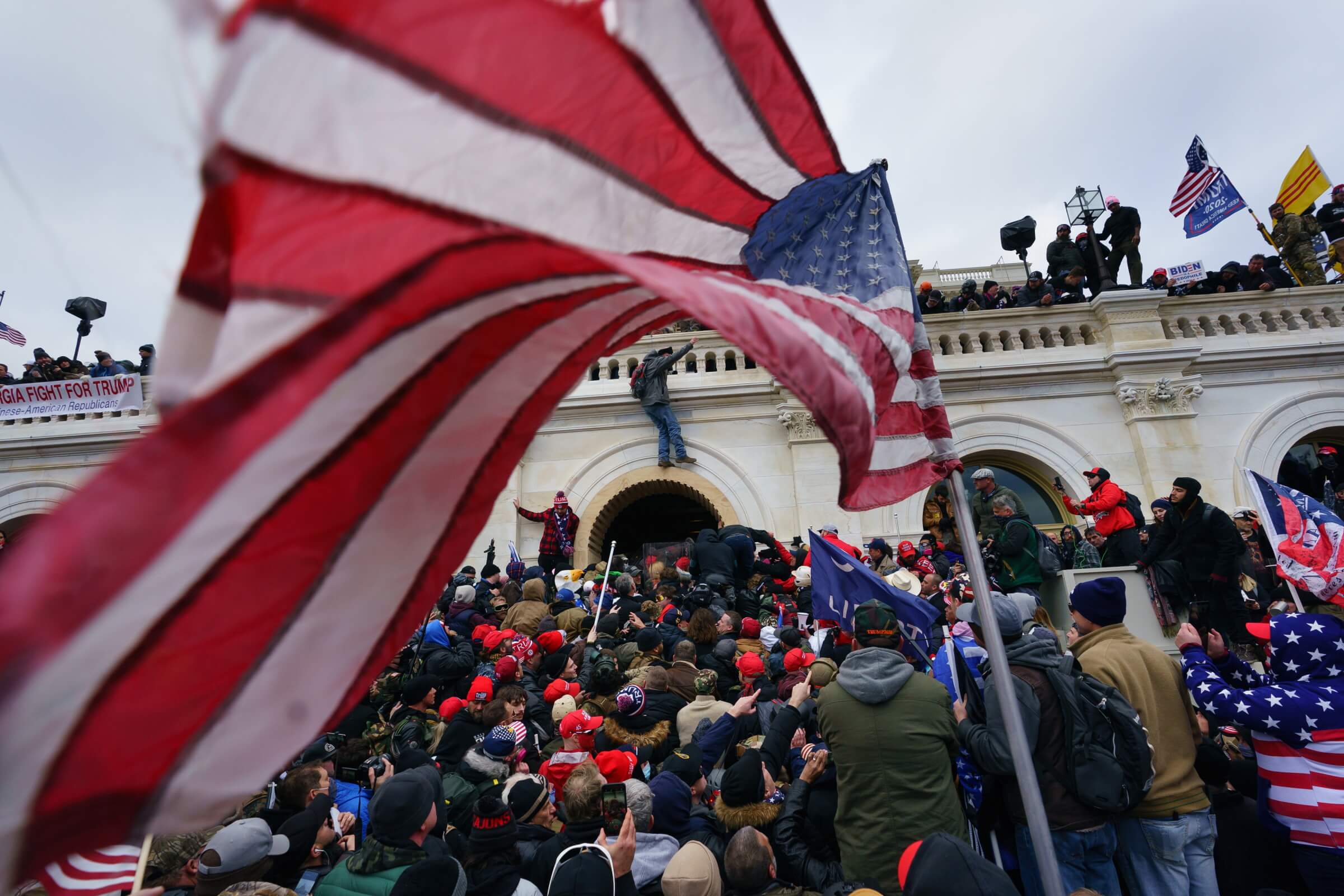
On Jan. 6, 2021, Inquirer photojournalists traveled to Washington, D.C., to document what they thought would be a significant — but contained — protest in Washington.
Instead, they witnessed and captured a historic moment more extreme than they predicted: A deadly insurrection inside the U.S. Capitol.
Staff photographers Heather Khalifa and Jessica Griffin share what it was like to experience the insurrection firsthand, and what they were thinking from behind the lenses of their cameras.
Annie Bryan: How do you prepare to cover an event like this? What did you know going into it?
Jessica Griffin: We research, read up, look at photos of previous events, look at maps to get a sense of how we think we’re going to proceed. That way, at least there’s a game plan in place, even if it doesn’t go the way we thought it would, which it usually doesn’t.
Then there’s equipment prep: A device for WiFi, this cable as a backup, an extra battery for the phone, so that whether you’re out there for two hours or eighteen hours, you have everything that you need.
Heather Khalifa: You can plan for these things, but you never actually know what’s going to happen until the event unfolds. As much as you plan, neither of us anticipated — and it sounds like many photographers did not anticipate — what was really going to happen yesterday.
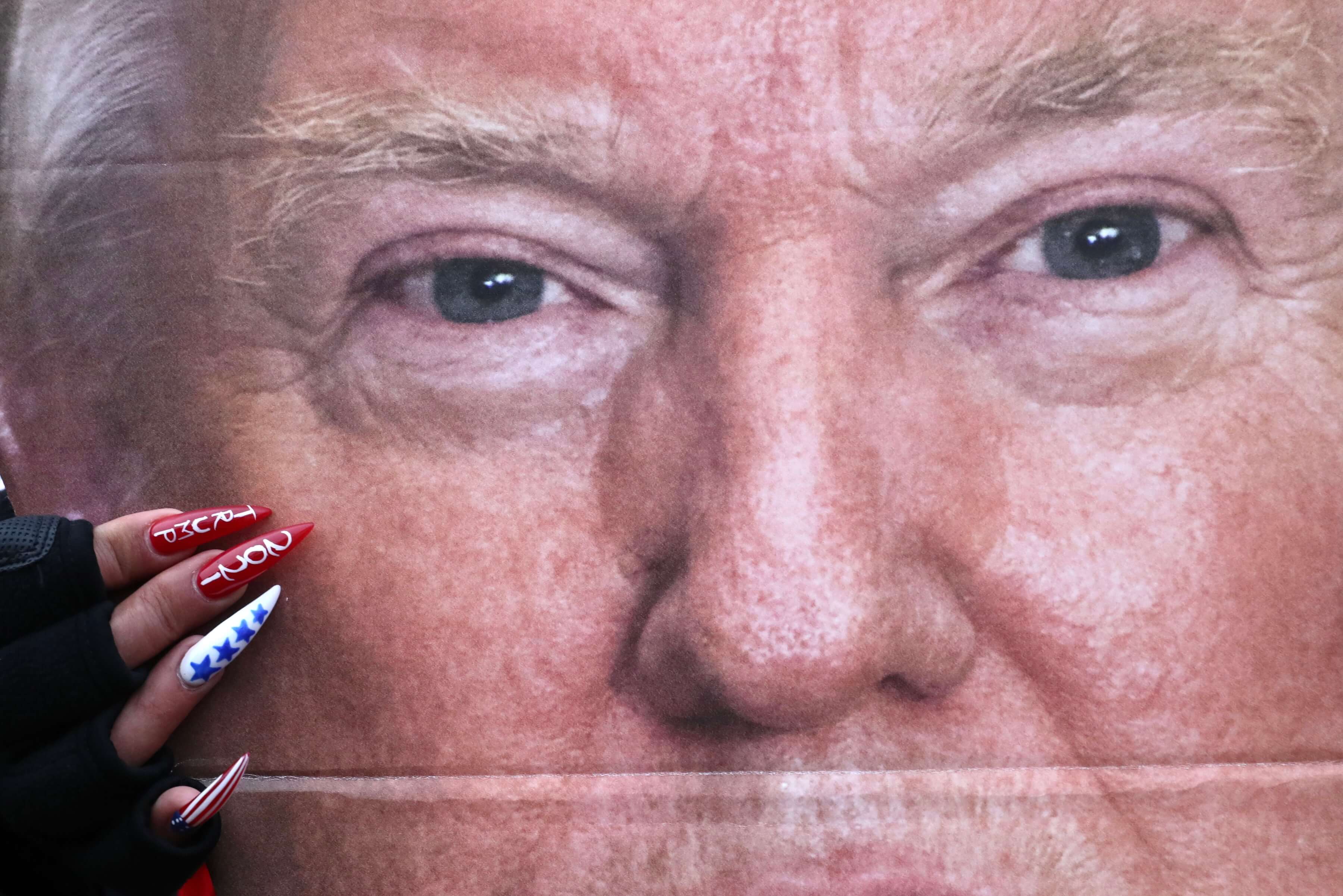
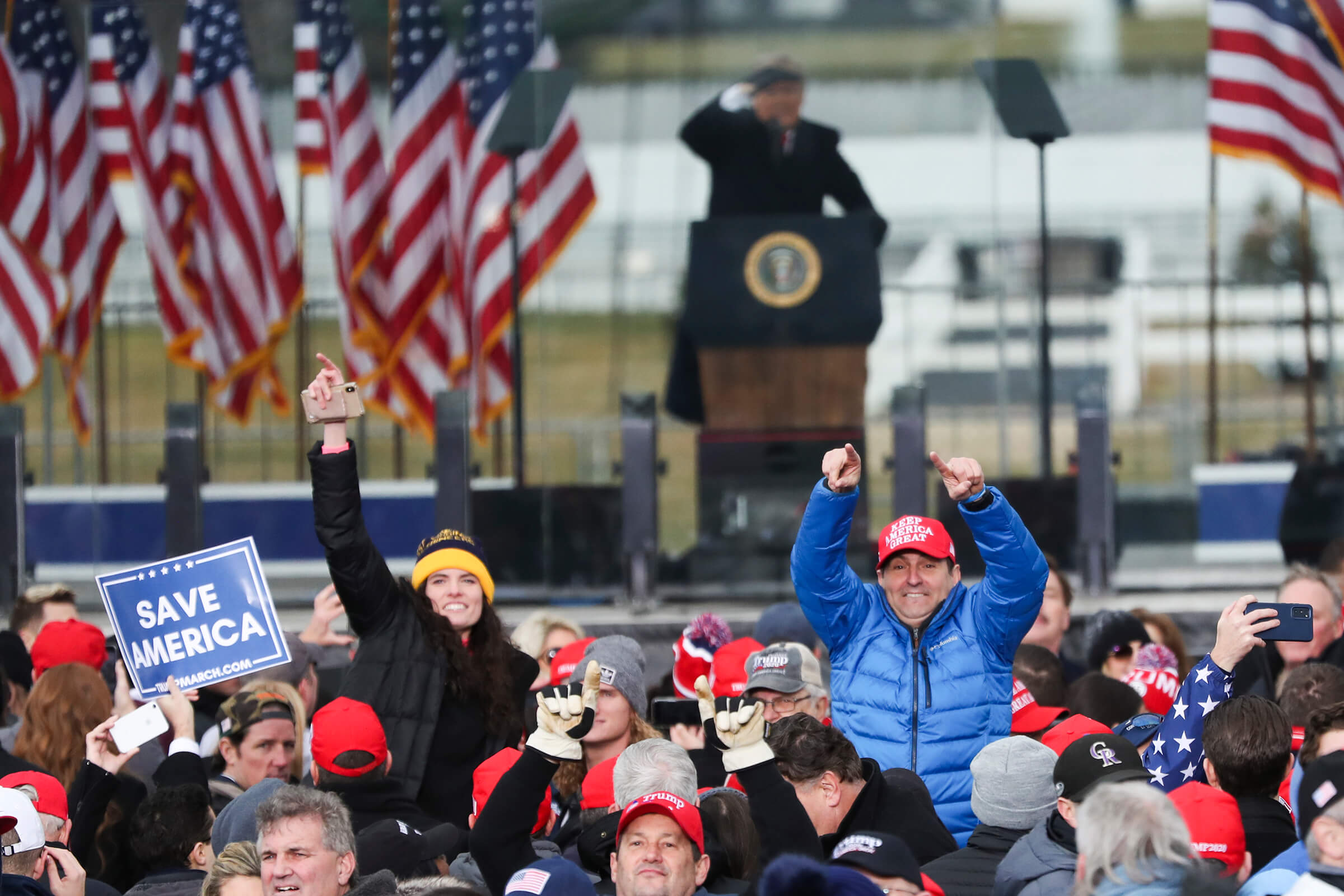
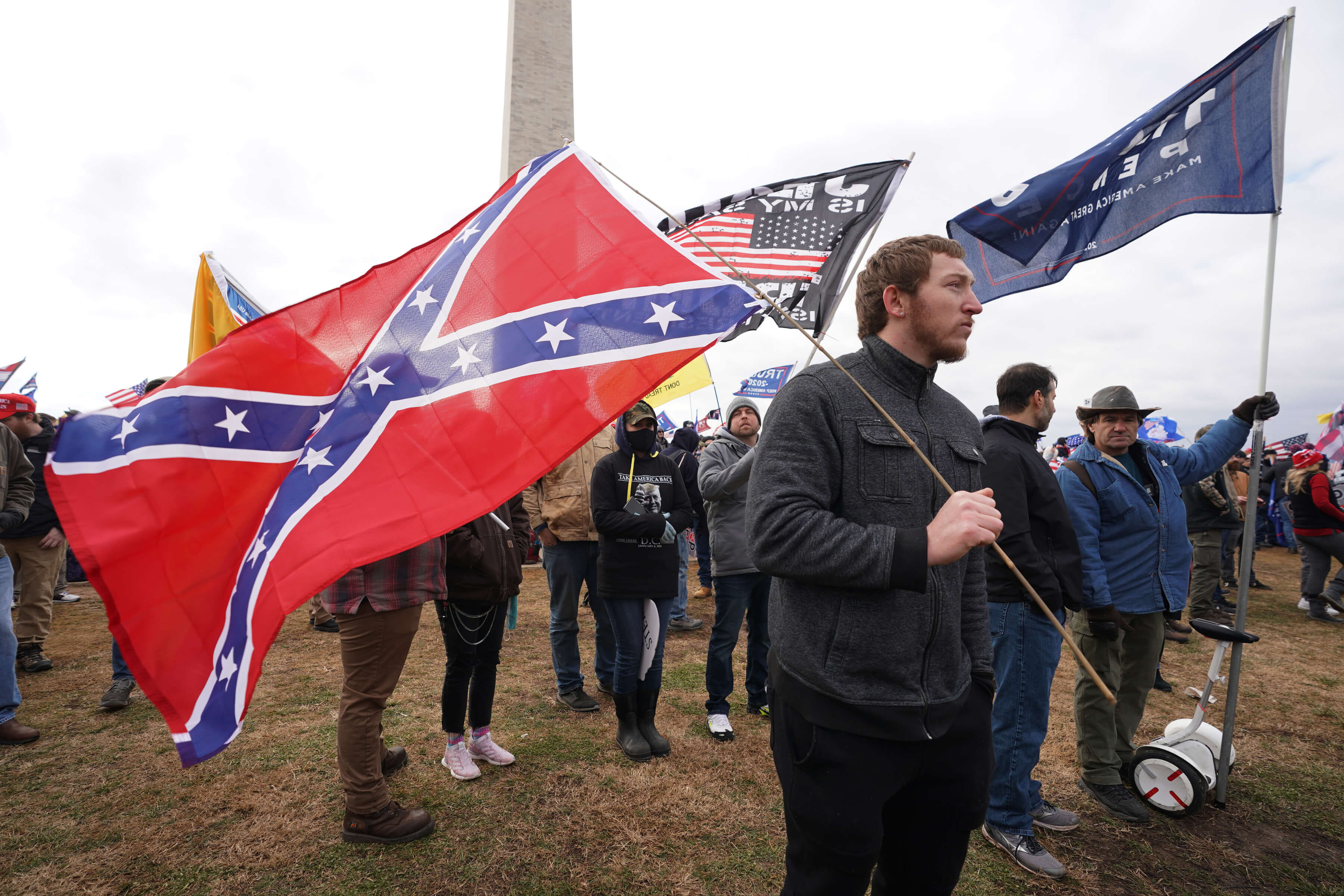
AB: Describe the scene as you arrived in D.C. to cover the president’s rally, and then on to the Capitol on Wednesday.
HK: It started out pretty typical, some Trump supporters were walking by, saying “fake news” and all of that. Some were screaming at the press, and then when the president spoke, there was even more of that. In all his rallies, he points to the press.
Trump’s speech was long, people even started to leave. But he gave people the directive to march down Pennsylvania Avenue, and that’s what riled them up.
JG: It was cold and there were a lot of people there, with more constantly arriving. The crowd was chanting. It seemed as though people were generally peaceful. They were energetic, especially when Trump came on to speak. Then he called on people to march to the Capitol building, and I started to feel concerned.
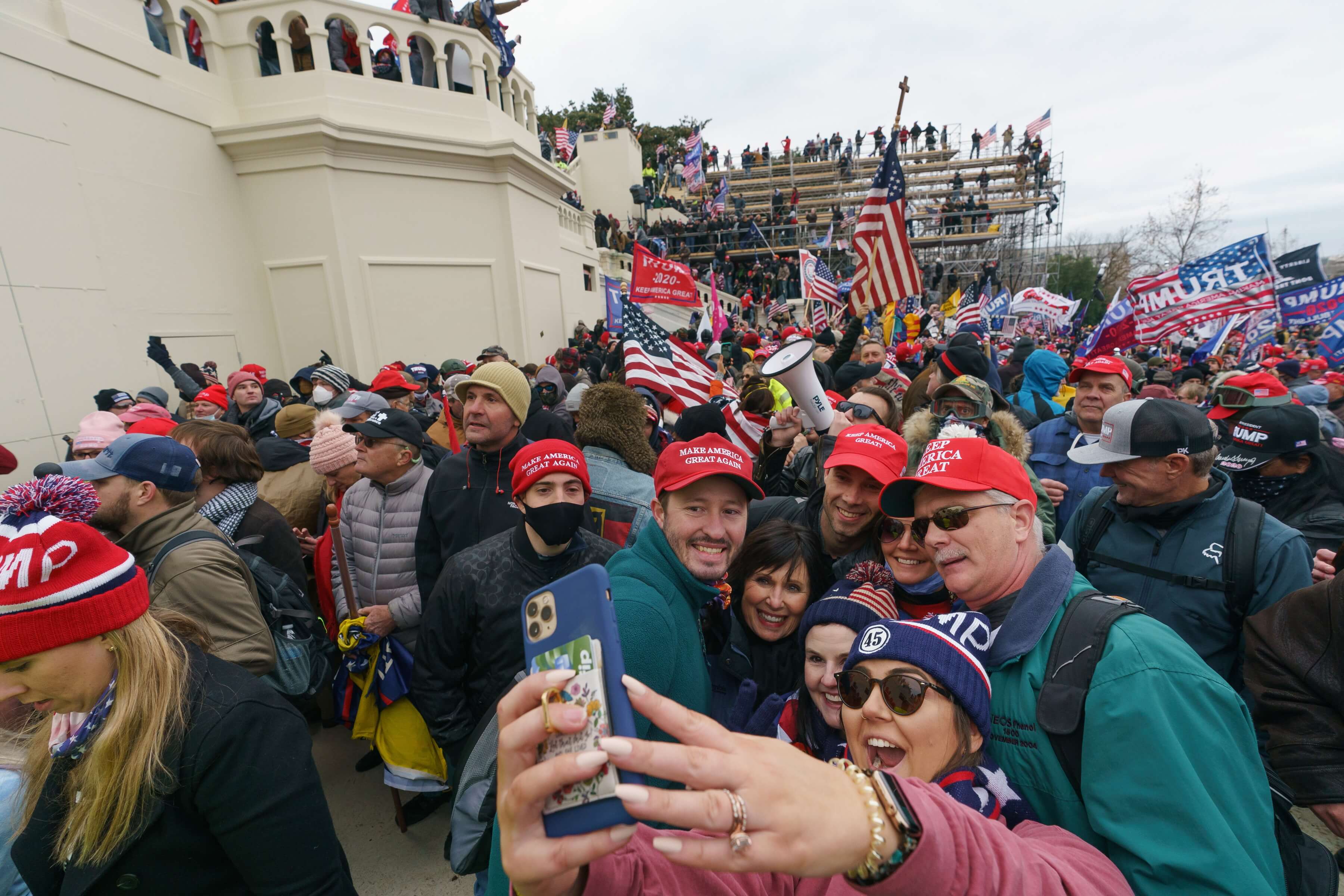
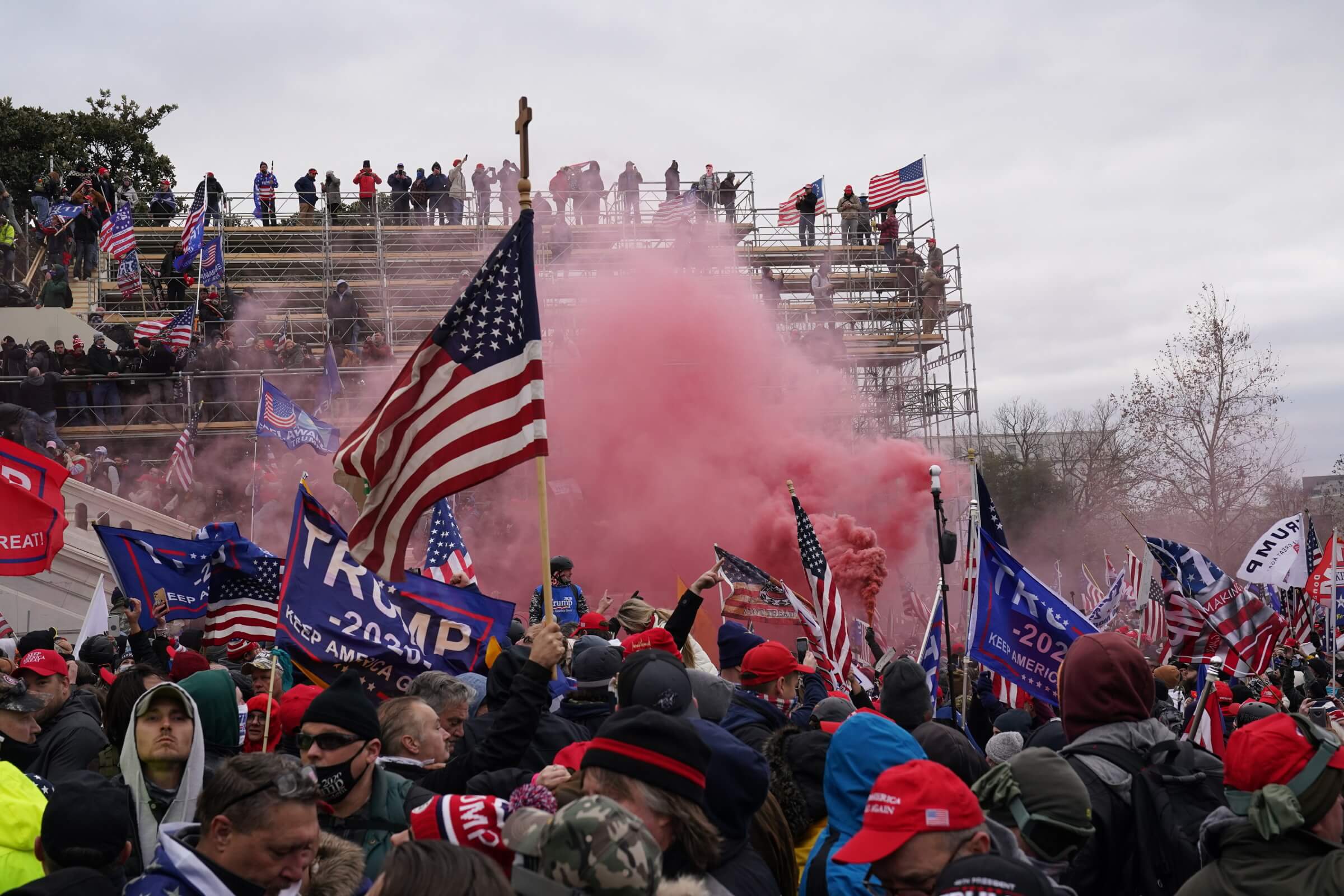
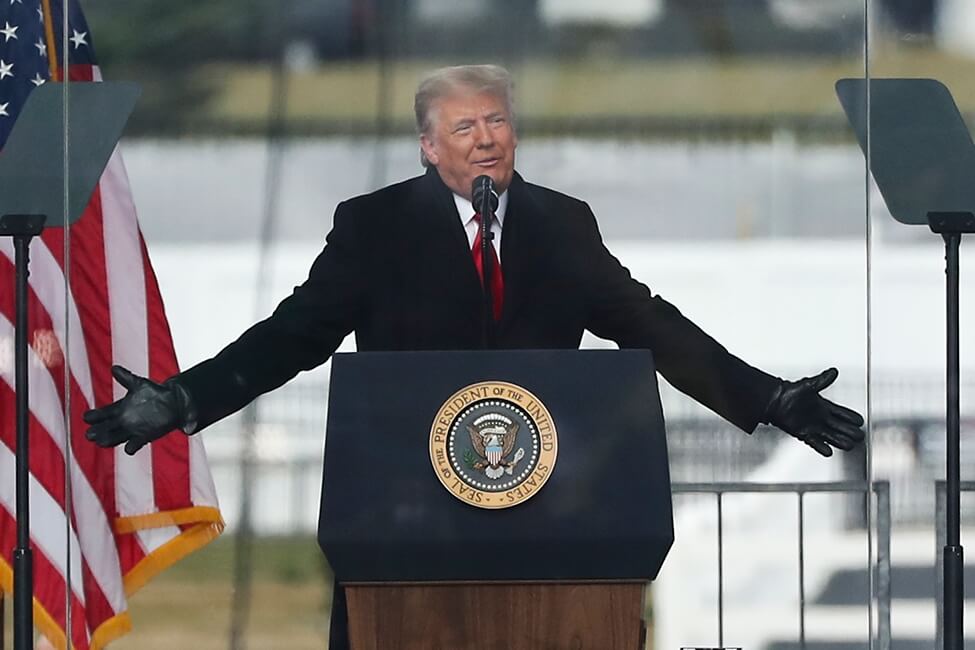
AB: When and how did you realize that the situation was going to escalate?
JG: When people were walking to the Capitol Building, some began yelling at police stationed along the route, the mood of the crowd became more angry and determined. When I arrived at the Capitol I saw that people were pushing against the metal barricades. I was pretty sure that things were going to escalate – but that time, I did not think they were actually going to succeed in getting into the building.
With each area that they breached, in the back of my mind, I kept thinking they’d get stopped — but they didn’t get stopped.
As with many breaking news events, you do not have an understanding of the event until later. You’re watching it unfold in pieces. When you’re in it, you can see the violence happening right in front of you, but you don’t know how bad it’s going to get, or what is happening in all the other places that you cannot see. I had no cell service for three hours so I was not receiving any updates.
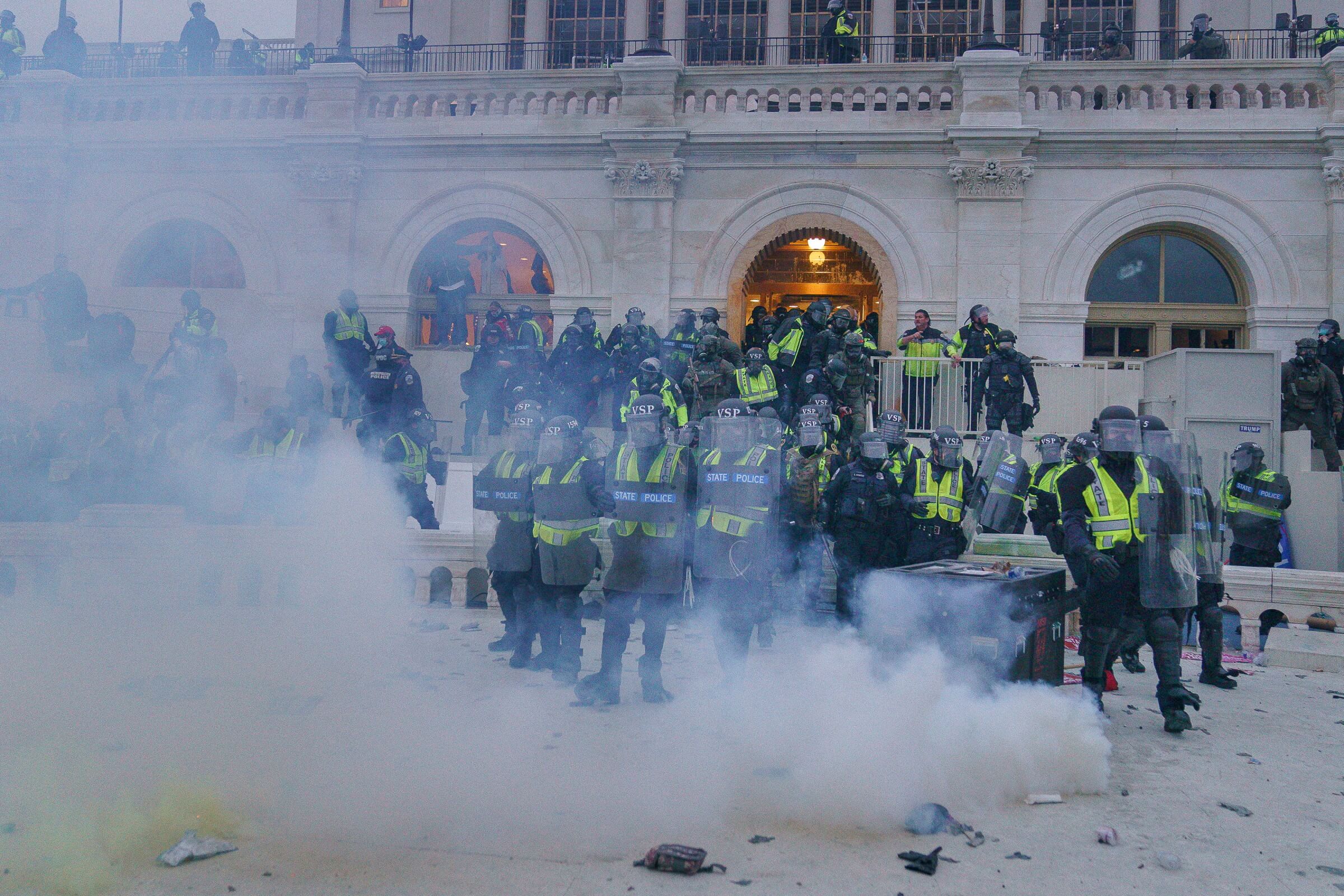
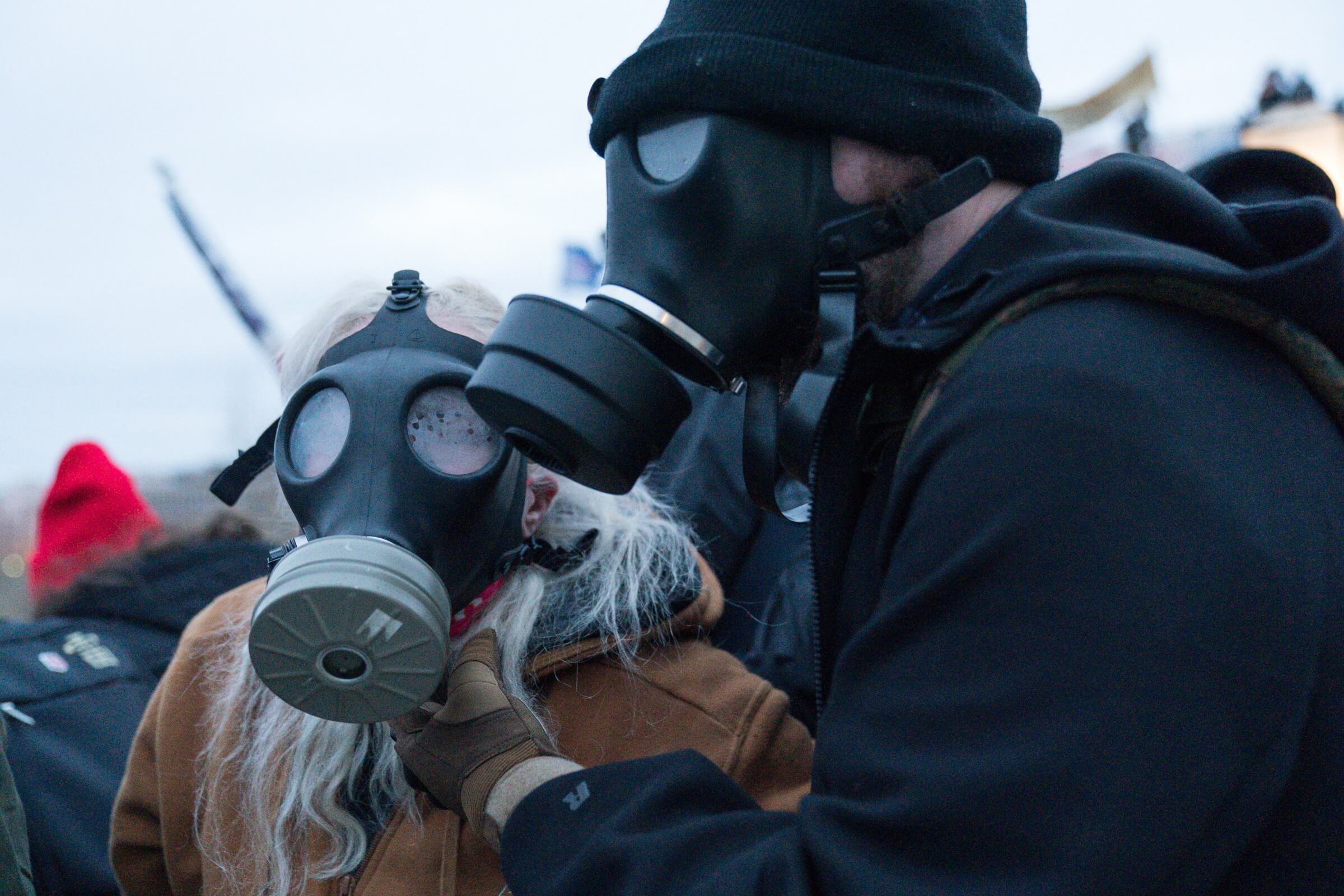
AB: Heather, you were at the rally where President Trump spoke to his supporters. What did you witness in that moment?
HK: He’s the President, and he’s the main source of conflict. He’s…
JG: the lightning rod.
HK: Yeah, he’s the lightning rod. When you’re covering a rally like that, there are so many pictures to be made. But when you’re covering the President, you have to get into the press area, claim your spot, and then you’re stuck. I’ve covered rallies of his before. This one just seemed particularly long and kind of … crazy.
He specifically encouraged a couple of times for people to march down to the Capitol. I know that energized people. When he told everyone to march to the Capitol, I sent Jessica a text that never went through because we didn’t have cell service, and I said “I don’t know if you’re listening, but Trump just mentioned the Capitol.”
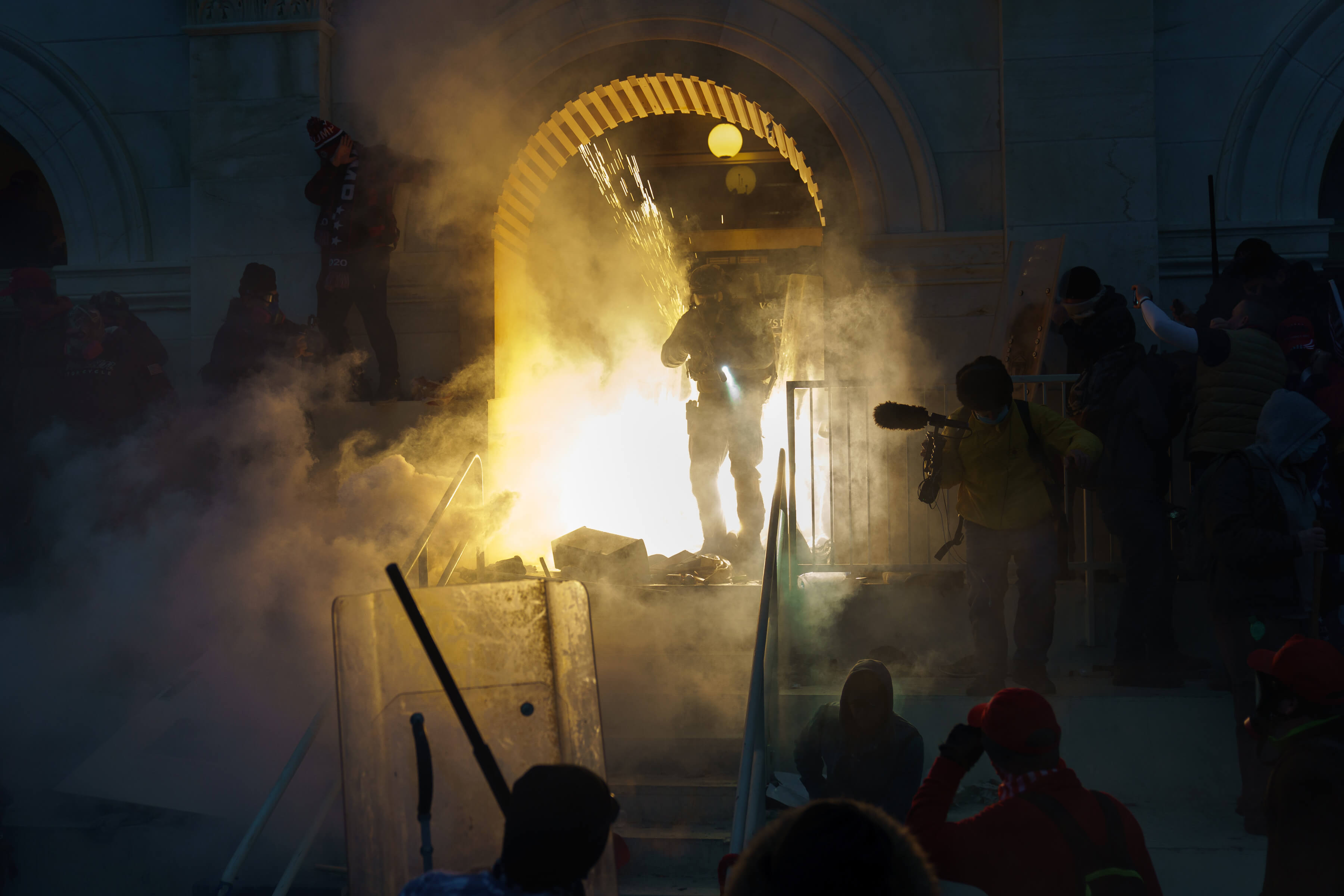
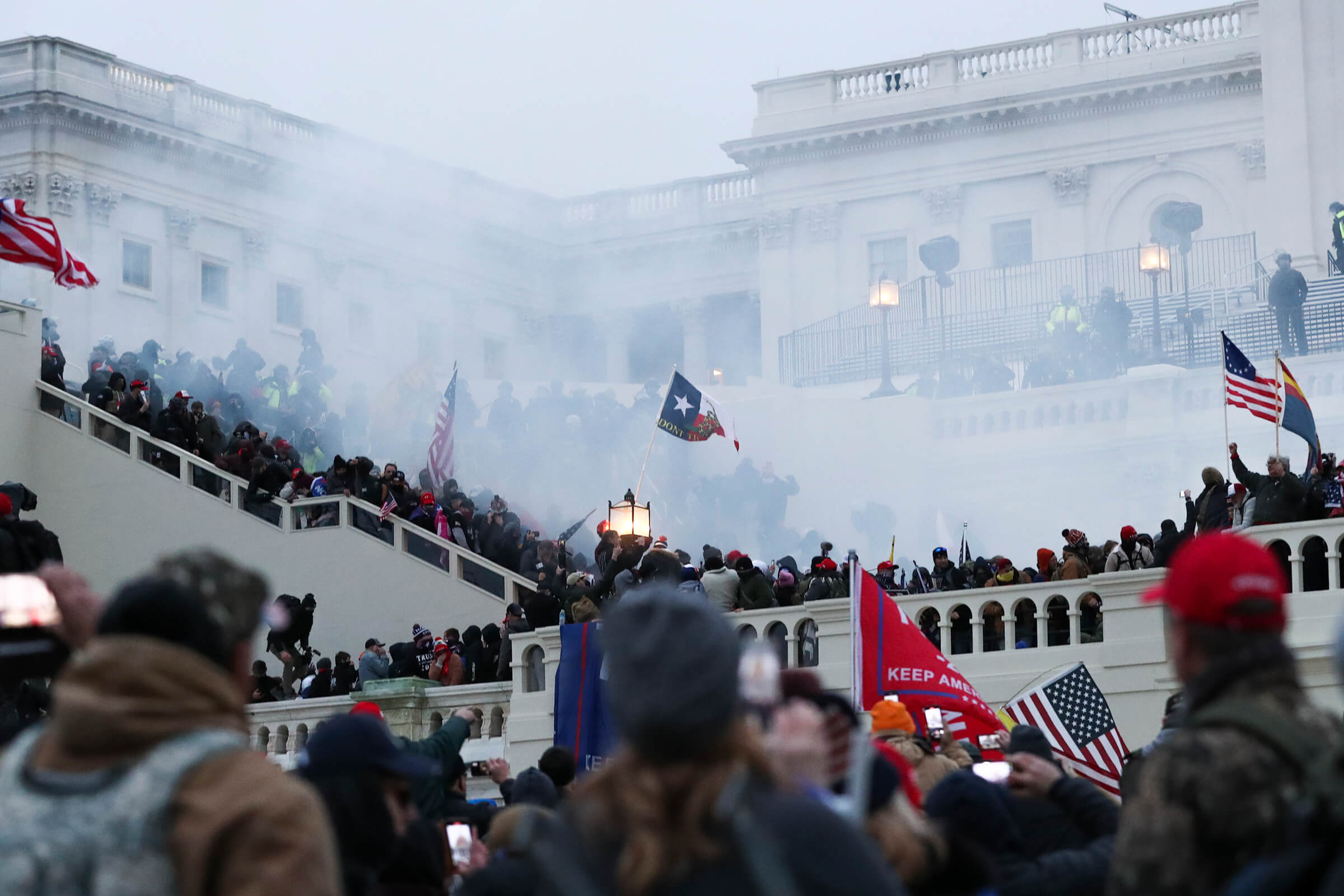
AB: How did the tone shift from the rally to the march to the Capitol?
JG: People were emboldened as the march progressed, they indicated that this was their moment to make right the wrongs they felt they had endured. They saw this as their chance. It did not seem to me as though they had a massive group action planned. I think some people came prepared to cause trouble. The sheer size of the group and their combined energy was one reason they succeeded in getting into the building. People were saying things like “our time is now,” “this is our moment,” “we can get this done,” “we can get into the Capitol building.” They were encouraging each other to physically join the battle. There were people on bullhorns yelling to the group like “move forward, push in, fill in the spaces, be strong.” They were encouraging each other to be aggressive.
HK: They kept referring to themselves as patriots. They kept chanting things like “hold the line, hold the line!” They were feeding off the energy, even the people who didn’t break in and came after the fact. They were sharing videos showing each other how one of the guys up front broke into Pelosi’s office. They were so excited, and so shocked. I don’t think they anticipated it themselves.

AB: What was the police presence like over the course of the day?
HK: From my perspective, at the rally, it was mainly the Secret Service. They were their typical, orderly, Secret-Service way.
JG: The police presence where I was next to the Washington Monument at the rally, I did not see as many police as I anticipated would be there.

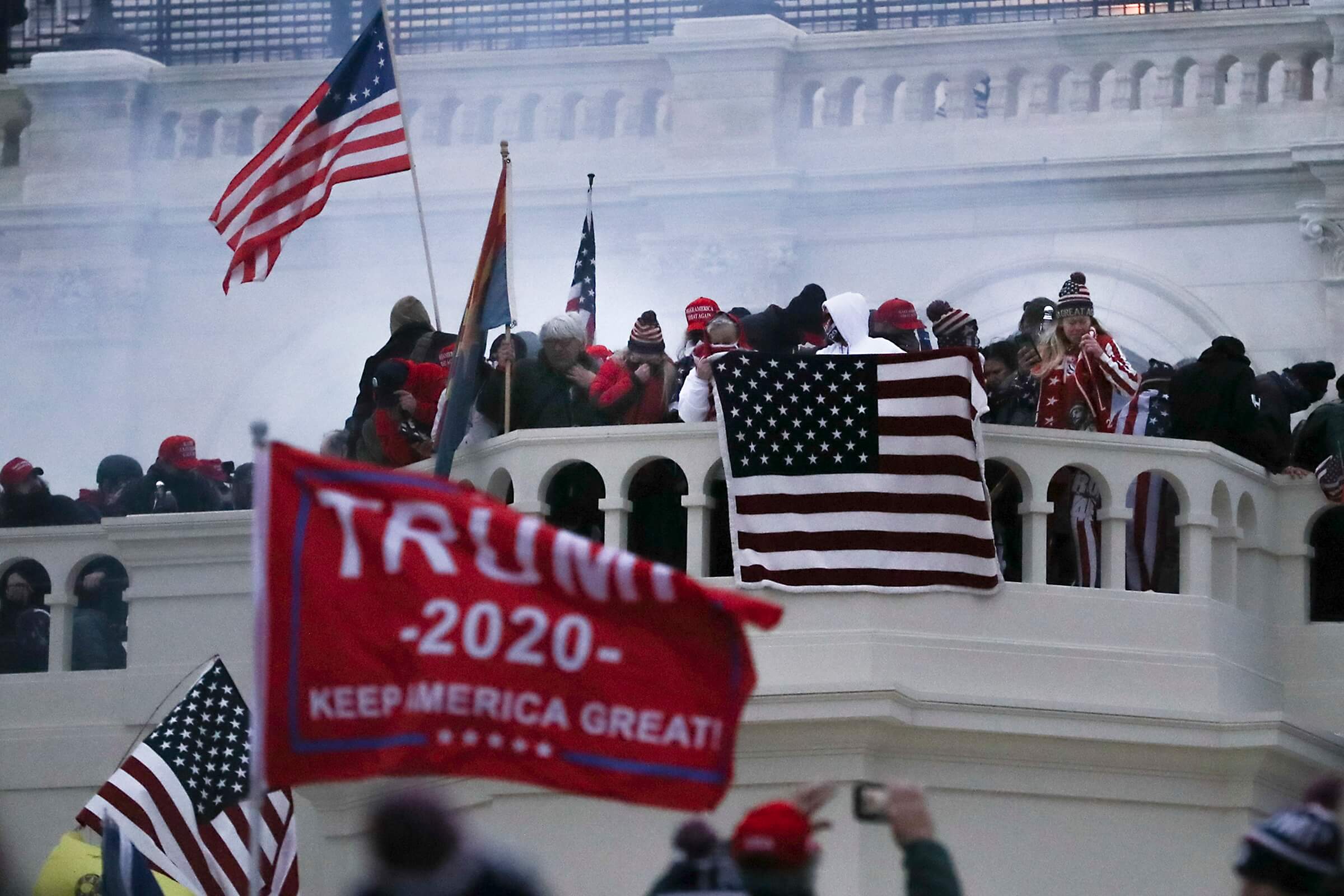
AB: Were there any moments when you felt unsafe?
JG: Yes, many. I was frequently standing on a railing, an equipment box or platform, any vantage point from which I could shoot — and those vantage points were all precarious because there were so many people, so things were shaking and moving. The concern was getting accidentally knocked off of a high point, getting trampled. I hoped I wouldn’t get trampled.
HK: People were packed like sardines on the infrastructure that was built for the inauguration. And that, to me, was just a really dangerous, claustrophobic mess. All it took was someone being pushed off by accident. With so much tear gas in the air, and everyone kind of trampling each other, I was shocked that no one really fell off the structures, luckily.
JG: The situation was out of control. I was definitely worried that there were too many people on the scaffolding. I just didn’t know what might happen with so many people, and so many engaging with police in a violent way. It felt like anything could happen – in the end I was relieved that I was not injured.


AB: How many people there were socially distancing or wearing masks?
HK: None of the rioters were wearing masks. None of the people at the rally were wearing masks, none of the people outside the Capitol were wearing masks, and they were all constantly coughing from the tear gas that was being released.
It was actually more rare to see someone wearing a mask that wasn’t part of the press. If I saw someone wearing a mask, I was surprised. There was no mask-wearing at all and a complete disregard for COVID-19.
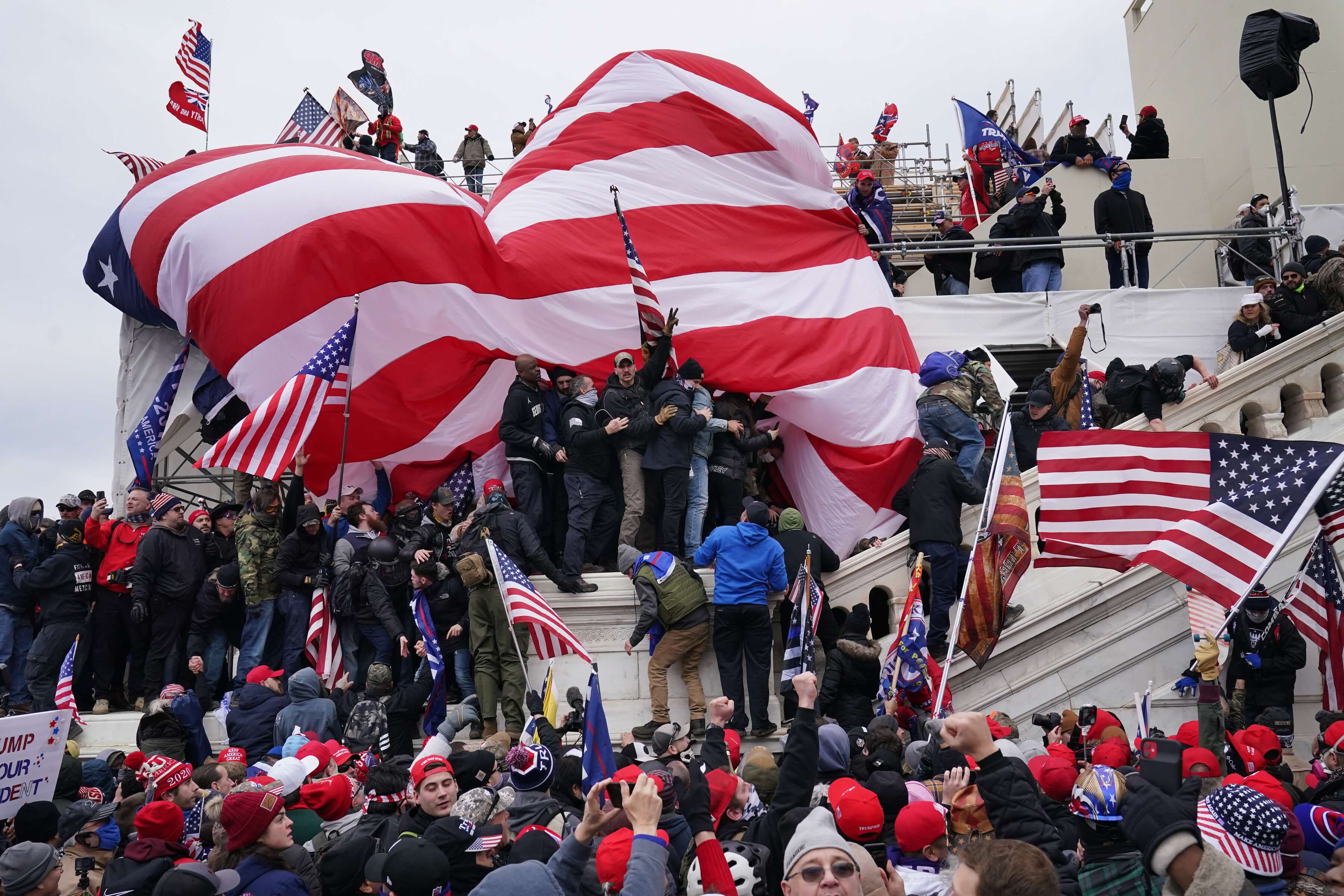
AB: When you spoke with people at the rally (or otherwise), what did they tell you about why they decided to be there?
JG: I did short interviews with about eight people at the rally. I spoke to 2 people who drove from California, some who flew from other states, my main question was: “what compelled you to be here, in person?” “Freedom” “voter fraud” and “protecting democracy” were often the answer. Some felt that they were being told how to live their lives. There was real frustration about business closures, mask mandates, some were concerned about the vaccine. Some said they were afraid of socialism, that democracy was in danger, and that is why they came all the way to D.C. for this – most of the people I talked to were from out of town.

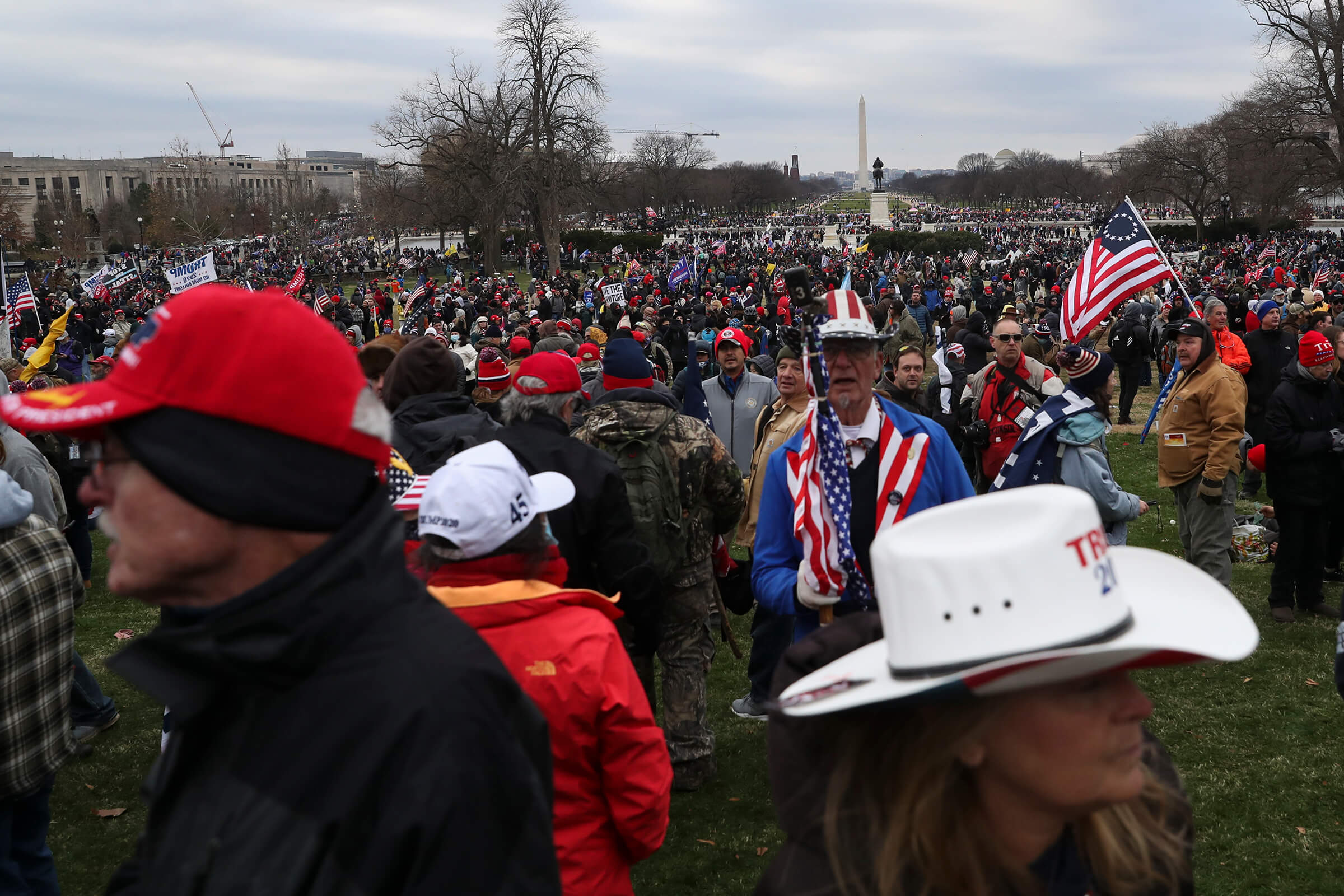
HK: Most of the people there genuinely believe that this election was rigged, and stolen from Trump. It’s not like they were thinking, “Let’s cause mischief.” They legitimately believe they are restoring democracy and that they are being wronged by everyone in Congress. And going back to Trump’s speech, he incited that. He implicated Republicans too — he wasn’t just talking about Pelosi and Schumer. With the exception of a few, he was bashing the Republican Party. So these people were calling themselves patriots, they really believed they were doing this service for America.

AB: You've photographed several noteworthy protests over the past year. What made yesterday's insurrection different from other events you've covered? Have you ever covered anything comparable?
HK: A lot of things, I think. Almost because we’ve covered so many protests, we almost got into a rhythm. We just came off a huge year of covering breaking news. We had our own set of George Floyd protests. All eyes were on Philly during the election.
Before every protest in Philly, I had a checklist: I have my helmet, I have my goggles, I have a tool to file photos directly from my phone. You expect some events to be more contentious than others, but you know the drill. This was a completely different situation. If you had told me the Capitol was going to be broken into and people would storm in, I wouldn’t have believed you.
A lot of the protests we’ve been covering — particularly with the protests around George Floyd’s death, that was a movement for social change. There were a lot of young people in those crowds. They weren’t being fed off of a conspiracy or misinformation — they wanted social change. And I think what’s happening here is there is a lot of misinformation, they genuinely believe the election was stolen, and once that adrenaline hit and that they were not met with resistance — they just kept going. They just kept passing barriers.
There was a heavy, heavy police presence for Black Lives Matter over the summer. From what I’ve seen, it seemed this time that the police were pretty restrained. I was waiting for a massive bout of tear gas or something that would make everyone scatter, and it never happened. They did it in shifts, they slowly backed people away.
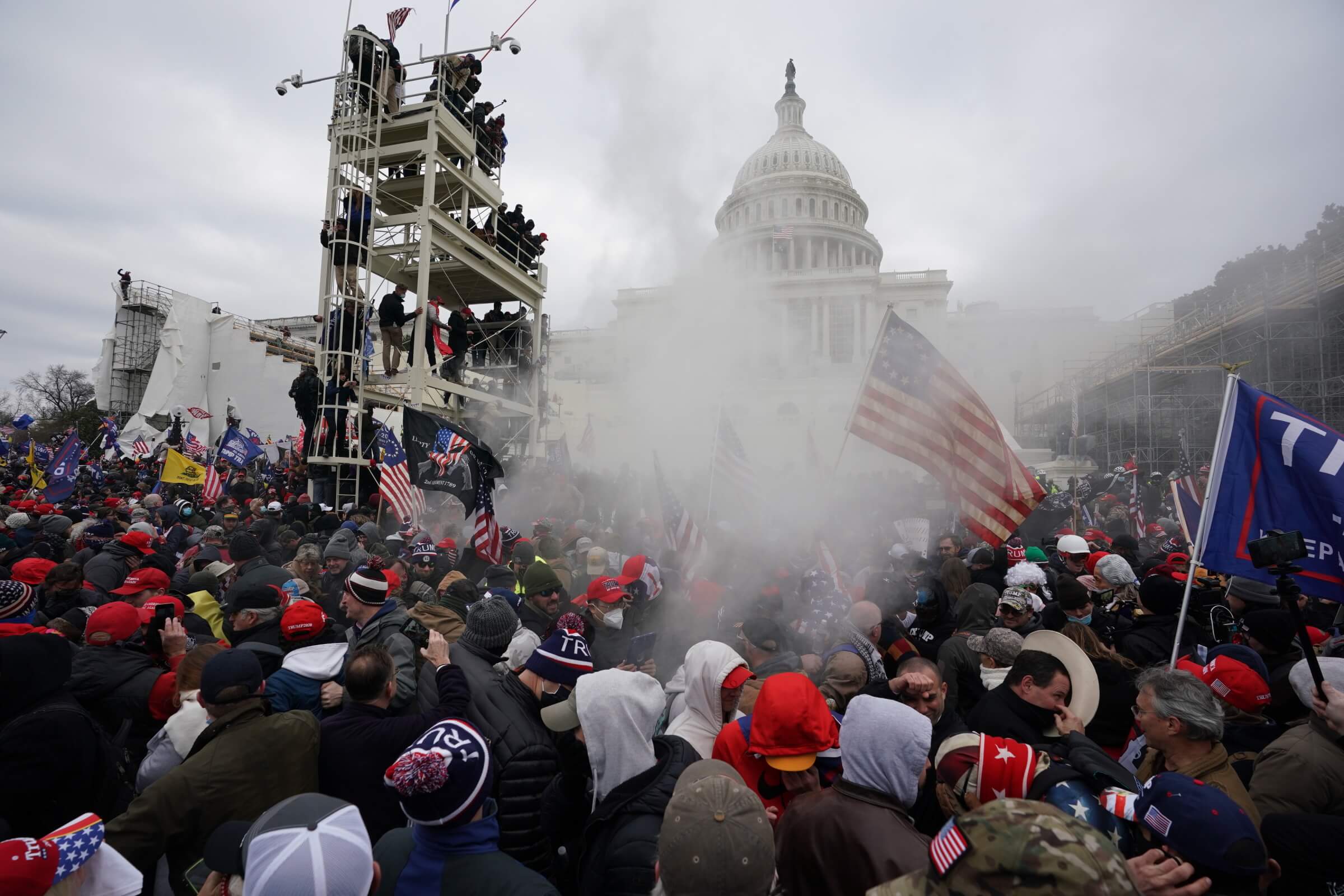
JG: D.C. hosts protests all the time throughout the year, so it did not occur to me that something of this magnitude would happen here in the middle of the day. The level of chaos was very surprising.
HK: And another key factor was that we didn’t have cell service this time. We usually communicate with each other so we don’t end up covering the same place at the same time, alerting each other of danger — we’re usually in constant communication. So this was definitely unusual, not having cell service.
In the meantime, Inquirer editors were struggling to keep tabs on the safety of the photographers and reporters in Washington.
At the time, Inquirer reporter Jonathan Tamari was also locked down inside the Capitol along with other press and congressional leaders, and reporter Julia Terruso was covering the event from outside the building.
AB: What do you want people to know about what you saw yesterday?
HK: It was a shocking event, but there have been many warning signs over the past five years.
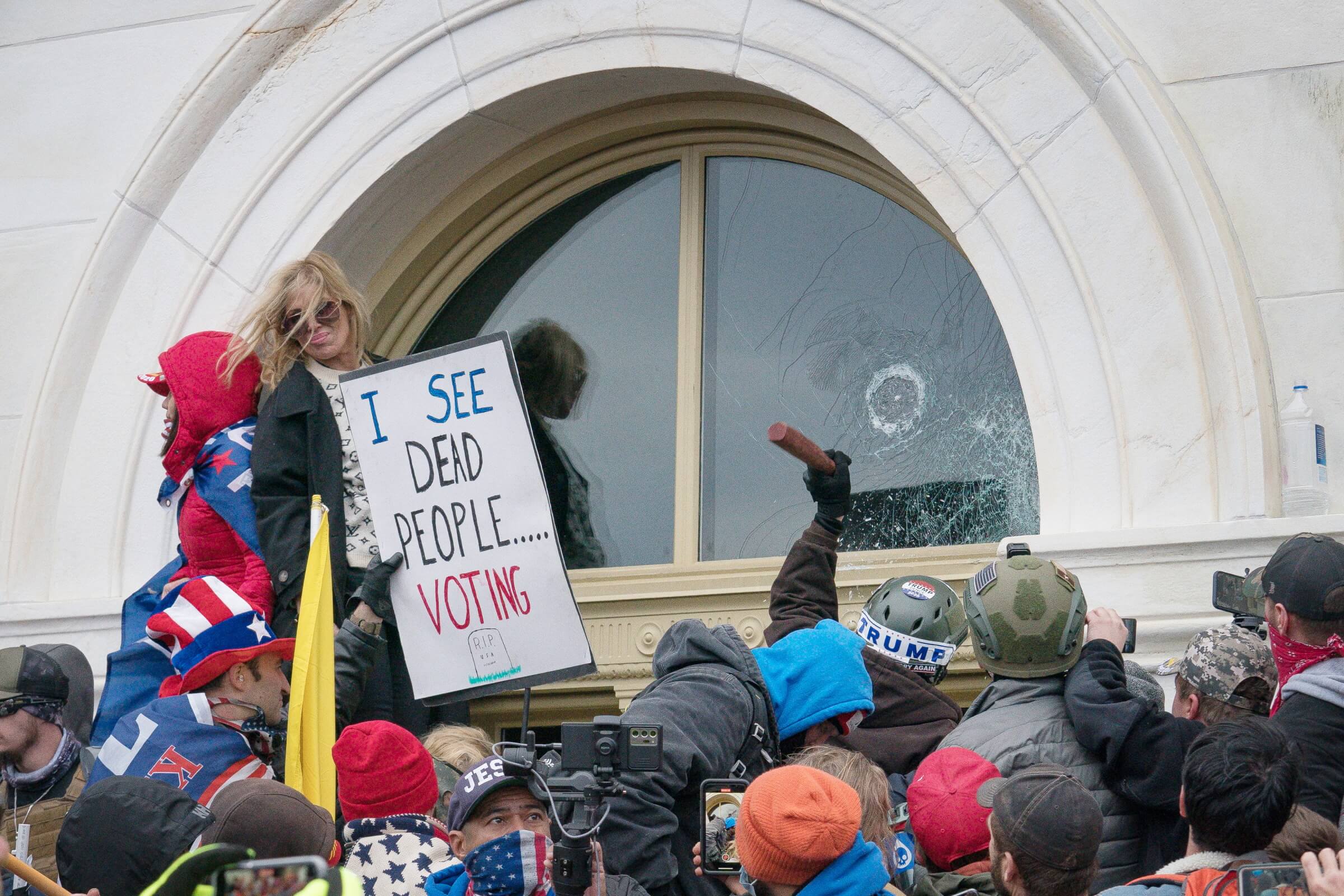

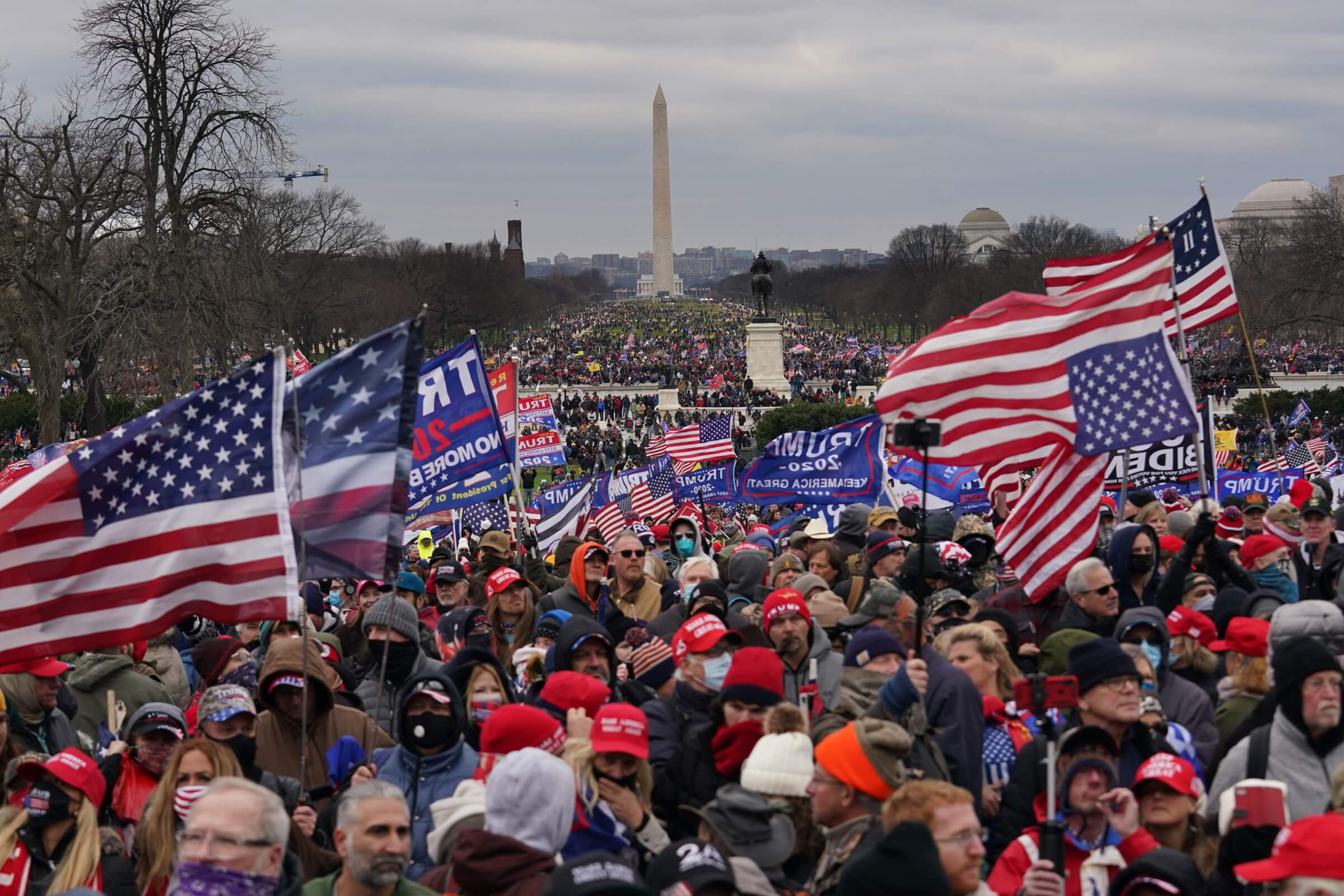
AB: What moments from yesterday’s insurrection will stick with you the most?
HK: When you’re on Capitol Hill, you can see everything. You can see how many people had taken over the scaffolding, then looking back toward the Washington Monument and seeing the crowd extending in that direction. Hearing how excited the people were, sharing stories and images from one another saying “We got in! We actually got in!” They felt like they won, like they really accomplished something. Seeing tear gas shroud the Capitol building — it’s just something you’re not going to forget.
JG: Witnessing what felt like a total breakdown of society. We’ve talked about the possibility of something like this, how lately it seems like this kind of thing could happen —but seeing it actually happen, I’ll never forget that.
And hopefully this will be as bad as it gets.
